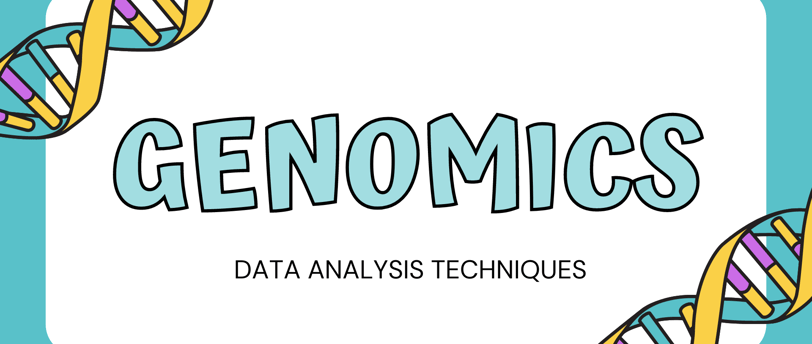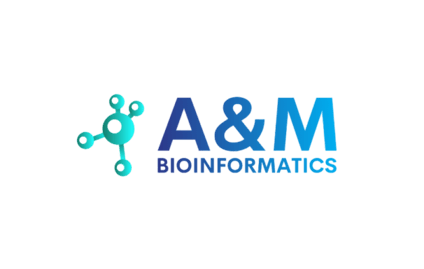Data Analysis Techniques in Genomics: An In-Depth Guide
3 min read


Data Analysis Techniques in Genomics: An In-Depth Guide
The field of genomics involves the comprehensive analysis of an organism's complete set of DNA, encompassing all genes. The advent of high-throughput sequencing technologies has resulted in massive amounts of genomic data, necessitating sophisticated analytical methods to interpret and derive meaningful insights. This blog delves deeper into key data analysis techniques used in genomics, providing detailed descriptions and examples.
1. Sequence Alignment
Sequence alignment is a fundamental technique in genomics for identifying regions of similarity between DNA, RNA, or protein sequences. This process is crucial for understanding functional, structural, and evolutionary relationships.
Pairwise Alignment
Global Alignment: The Needleman-Wunsch algorithm aligns sequences from end to end, suitable for sequences of similar length and structure. This method is ideal for comparing two closely related sequences, such as gene orthologs.
Local Alignment: The Smith-Waterman algorithm identifies the best local alignments, allowing for the comparison of more divergent sequences. This technique is useful for finding conserved domains within proteins or identifying sequence motifs.
Multiple Sequence Alignment (MSA)
Tools: Clustal Omega and MUSCLE are widely used for aligning multiple sequences to highlight conserved regions across a set of sequences. MSA helps in constructing phylogenetic trees and understanding evolutionary relationships.
Example: Aligning sequences from different strains of a virus to identify conserved and variable regions, which can inform vaccine design.
2. Read Mapping
Read mapping involves aligning short DNA sequences (reads) obtained from sequencing to a reference genome, essential for variant discovery and functional annotation.
Burrows-Wheeler Aligner (BWA): Utilizes the Burrows-Wheeler transform to efficiently map short reads to a reference genome. BWA is particularly effective for aligning high-throughput sequencing data.
Bowtie: Known for its speed and memory efficiency, Bowtie is suitable for large datasets. It uses a Burrows-Wheeler index to quickly align reads, making it ideal for applications like RNA-Seq.
3. Variant Calling
Variant calling identifies genetic variations (e.g., SNPs and indels) between the sequenced genome and the reference genome, crucial for understanding genetic diversity and disease susceptibility.
GATK (Genome Analysis Toolkit): A comprehensive toolkit for variant discovery and genotyping. GATK includes tools for base quality score recalibration, indel realignment, and variant filtering.
FreeBayes: Employs a haplotype-based approach to variant calling, considering multiple alleles and complex polymorphisms. It is useful for population genomics studies.
4. Genome Assembly
Genome assembly reconstructs the original genome sequence from short reads generated by sequencing. This process is particularly challenging for genomes with repetitive sequences.
De novo Assembly
SPAdes: Designed for single-cell and bacterial genomes, SPAdes constructs high-quality contigs from short reads.
ABySS: A scalable de novo assembler suitable for large genomes. It uses a distributed approach to handle massive datasets.
Reference-guided Assembly
Cufflinks: Assists in reconstructing transcripts from RNA-Seq data, aligning reads to a reference genome, and identifying novel transcripts.
5. Functional Annotation
Functional annotation involves identifying and assigning biological functions to genomic elements such as genes, regulatory regions, and non-coding RNAs.
Gene Ontology (GO): Provides a standardized framework for representing gene and gene product attributes. GO annotations include biological processes, molecular functions, and cellular components.
KEGG (Kyoto Encyclopedia of Genes and Genomes): Maps genes to metabolic pathways and biological systems, aiding in the interpretation of high-throughput data.
6. Differential Expression Analysis
Differential expression analysis identifies genes expressed at different levels under various conditions, such as in healthy versus diseased tissues.
DESeq2: Uses a model based on the negative binomial distribution to analyze count data from RNA-Seq experiments. It includes methods for normalization, statistical testing, and visualization.
EdgeR: Utilizes empirical Bayes estimation and exact tests for differential expression analysis, suitable for both small and large datasets.
7. Metagenomics Analysis
Metagenomics studies genetic material recovered directly from environmental samples, providing insights into microbial community composition and function.
QIIME (Quantitative Insights Into Microbial Ecology): A comprehensive pipeline for microbiome analysis, supporting tasks like sequence quality control, taxonomic classification, and diversity analysis.
MetaPhlAn (Metagenomic Phylogenetic Analysis): Profiles microbial community composition using clade-specific marker genes, allowing for the identification of microbes down to the species level.
8. Epigenomics Analysis
Epigenomics studies modifications on the genome that do not change the DNA sequence but affect gene expression, such as DNA methylation and histone modification.
Bisulfite Sequencing: Converts unmethylated cytosines to uracil, allowing for the identification of methylated sites. Tools like Bismark are used for aligning bisulfite-treated sequences.
ChIP-Seq (Chromatin Immunoprecipitation Sequencing): Identifies protein-DNA interactions by combining immunoprecipitation with high-throughput sequencing. This technique helps in mapping histone modifications and transcription factor binding sites.
9. Single-Cell Genomics
Single-cell genomics analyzes the genomes of individual cells to understand cellular heterogeneity and the function of individual cells within a tissue.
Seurat: An R package for single-cell RNA-seq data analysis, including clustering, differential expression, and trajectory inference. Seurat provides tools for integrating multiple datasets and visualizing complex data structures.
SC3 (Single-Cell Consensus Clustering): Performs unsupervised clustering of single-cell RNA-seq data, providing consensus clustering results and visualizations.
Conclusion
The field of genomics is rapidly evolving, driven by innovations in sequencing technologies and computational methods. The data analysis techniques discussed in this blog are essential for unlocking the biological insights hidden within genomic data. As these techniques continue to advance, they will undoubtedly lead to new discoveries and a deeper understanding of the genetic basis of health and disease. By leveraging these sophisticated analytical methods, researchers can make significant strides in genomics research, ultimately improving health outcomes and advancing personalized medicine.
